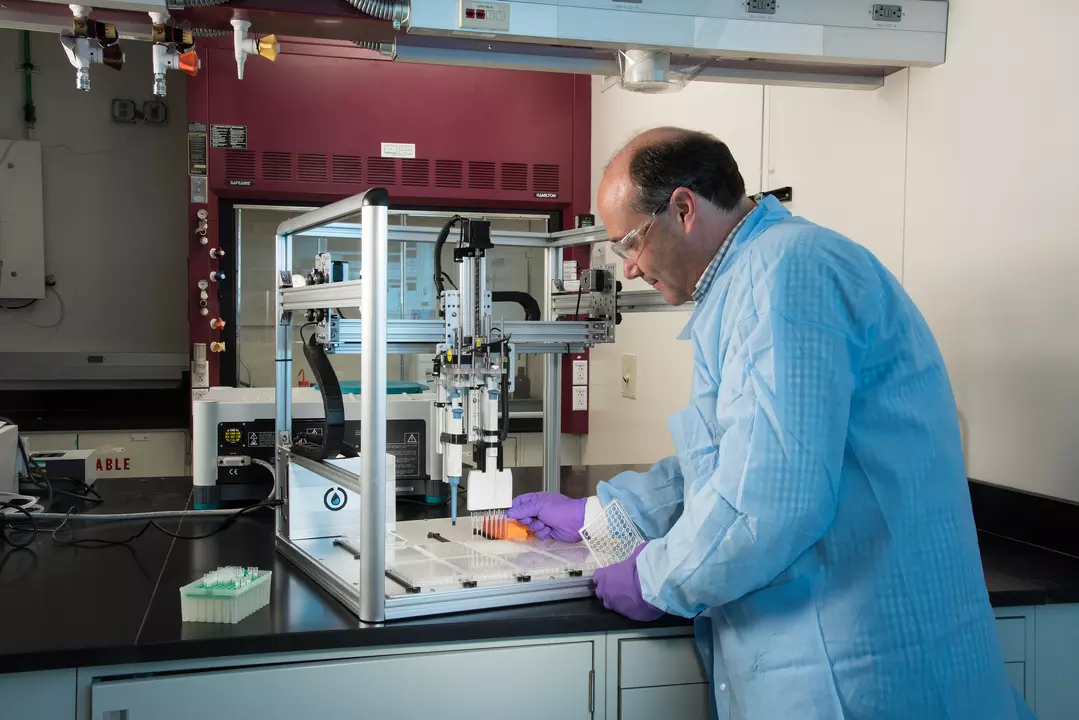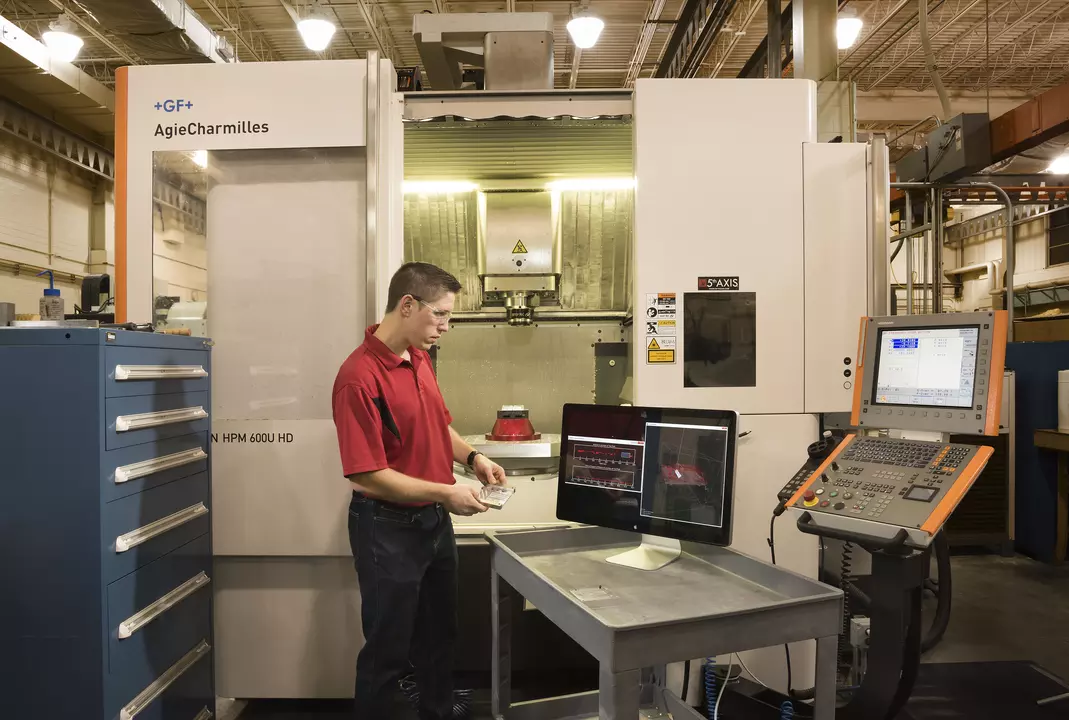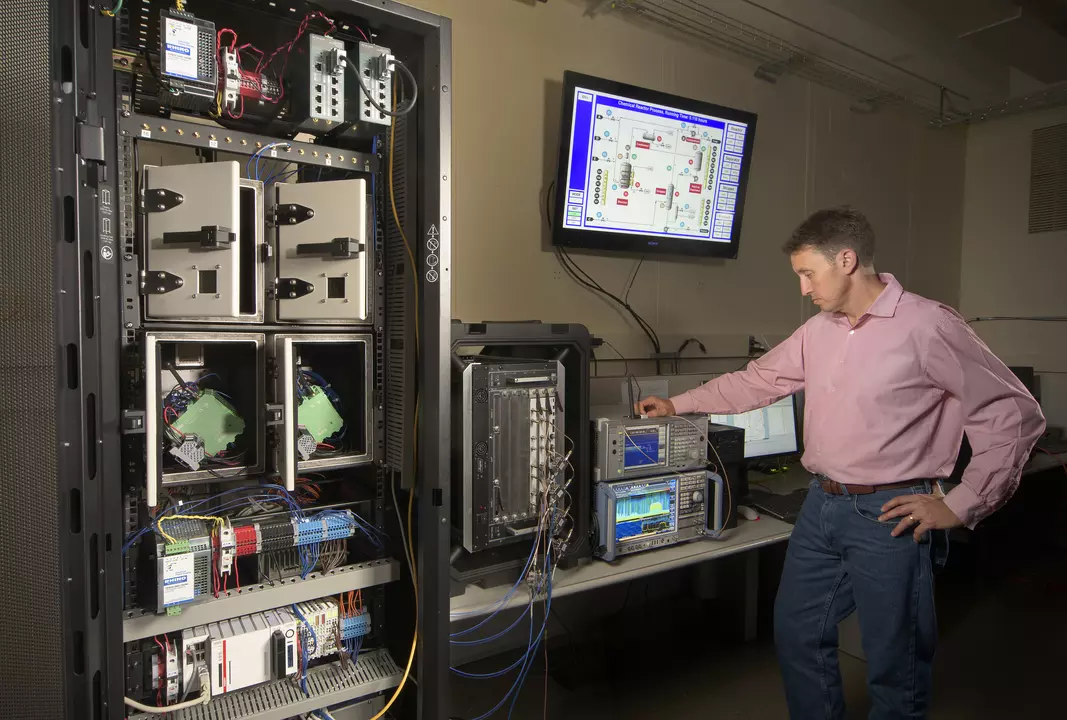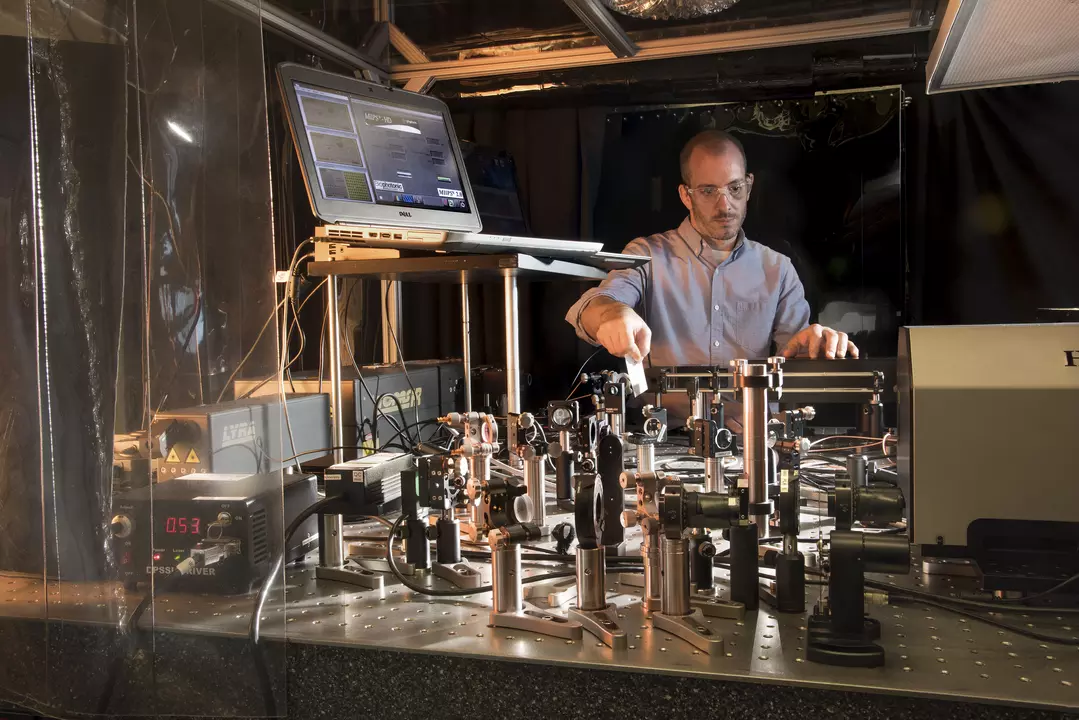
An official website of the United States government
Here’s how you know
Official websites use .gov
A .gov website belongs to an official government organization in the United States.
Secure .gov websites use HTTPS
A lock (
) or https:// means you’ve safely connected to the .gov website. Share sensitive information only on official, secure websites.
10 Ways NIST Helps to Advance Manufacturing
NIST researchers are helping modern manufacturing reach its full potential. These NIST snapshots provide a glimpse into the future of manufacturing: robot arms controlled through virtual reality, cell-based medicine, 3-D metal printing, wireless factory communications, a “digital thread” that electronically connects product design to fabrication, neutrons that look inside consumer products, and experts serving local manufacturers in one of our Manufacturing Extension Partnership centers.
-

The size of a small car, the Additive Manufacturing Metrology Testbed is a custom-made 3-D metal printer that helps NIST researchers such as mechanical engineer Brandon Lane study this layer-by-layer printing process in depth to help manufacturers improve their “recipes” for quality parts and assemblies.
Credit: © Earl Zubkoff -

NIST’s Manufacturing Extension Partnership (MEP) has centers in every state and Puerto Rico to help small and medium-sized manufacturers like Rekluse Motor Sports succeed. Idaho MEP center, TechHelp, guided the motorcycle clutch maker through the design and testing of a new product that has made motocross a more accessible sport—and led Rekluse to spin off a new company, VersaBuilt. Here, TechHelp’s executive director, Steve Hatten (L) learns about improvements VersaBuilt's robotics have brought from Rekluse engineering manager Sarah Haight and the company’s founder and now VersaBuilt president, Al Youngwerth.
Credit: Kristen Dill -

NIST computer scientist Megan Zimmerman manipulates a set of mechanical arms by using virtual reality to put her arms in control. The technology allows programmers to task a robot remotely and makes possible quick programming with minimal training.
Credit: copyright Earl Zubkoff -

U.S. companies are developing manufacturing processes for cell therapies to treat diseases, and need to conduct large-scale experiments to generate quality specifications. Here, John Elliott works with an automated liquid handling instrument that significantly increases the number of experiments that can be performed, allowing for quicker development of effective cell-based medicines.
Credit: copyright Earl Zubkoff -

NIST mechanical engineer Tom Hedberg works with the Smart Manufacturing Systems testbed that is advancing the “digital thread,” an electronic pathway designed to seamlessly connect product design to fabrication, and cut manufacturing time by up to 75 percent.
Credit: copyright Earl Zubkoff -

Physical scientist Kerry Siebein of NIST’s Center for Nanoscale Science and Technology operates a scanning electron microscope while process engineer Josh Schumacher looks on. One-on-one training in nanofabrication and nanotools helps prepare young scientists and engineers for careers in nanomanufacturing.
Credit: K. Dill/NIST -

It takes a big instrument to see tiny things. Custom designed and built at NIST, the very small angle neutron scattering (vSANS) instrument is a new addition at the NIST Center for Neutron Research (NCNR). At the NCNR, industry researchers harness the capabilities of neutrons to study and improve products from jet fuel to shampoo.
Credit: Fran Webber/NIST -

Using a novel testbed that recreates factory environments in the lab, NIST engineer Rick Candell helps “cut the cords” (and wires) from industrial communications networks by studying how different factory layouts affect wireless radio frequencies, and in turn, how this impacts factory performance.
Credit: ©Earl Zubkoff -

Manufacturers of therapeutic proteins for fighting diseases often freeze-dry their formulations to keep them stable. Creating formulations with good shelf-life requires years of research and is not always successful. NIST researchers are developing a laser-based method to rapidly evaluate candidate formulations. If successful, it could save companies many years of research and millions of dollars in testing costs. Here, NIST’s John Bender sets up a laser table to measure protein dynamics.
Credit: copyright Earl Zubkoff -

To improve an age-old building material like concrete, you may need to look at it in a new way. NIST researchers are using a 3D visualization laboratory called the CAVE to study the flow of particles in a coaxial rheometer—a device that measures viscosity. This tool also helped NIST develop the first reference material manufacturers can use to calibrate rheometers designed for mortar or concrete based on modelling.
Credit: copyright Earl Zubkoff
